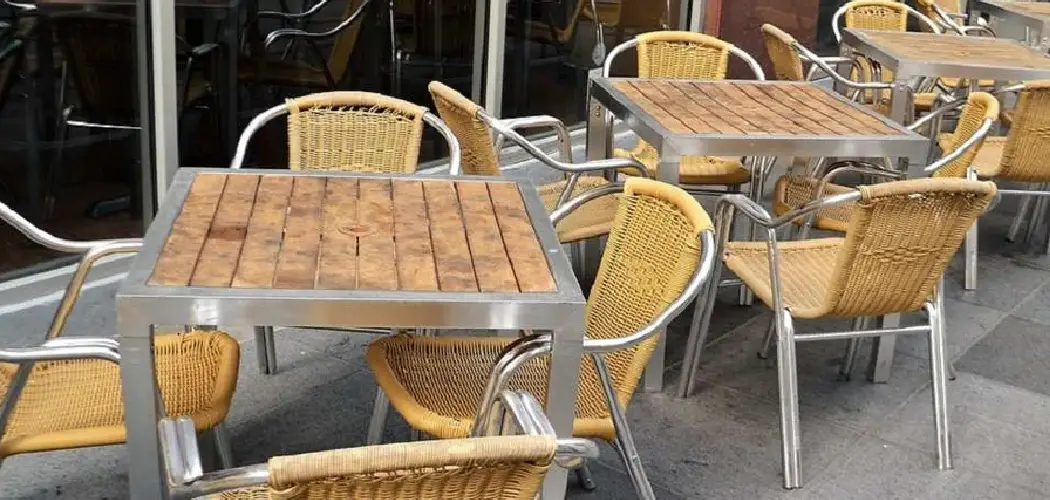Keeping your aluminum table clean is essential to maintain its appearance and longevity. Aluminum, known for its durability and lightweight nature, is a popular choice for outdoor and indoor furniture. However, exposure to the elements, spills, and everyday use can lead to dirt buildup and potential stains. This guide is designed to help you with how to clean aluminum table. With the right cleaning methods, you can effortlessly restore your table’s shine and ensure it remains a centerpiece in your home or garden. This guide will walk you through the steps to clean your aluminum table effectively and safely.
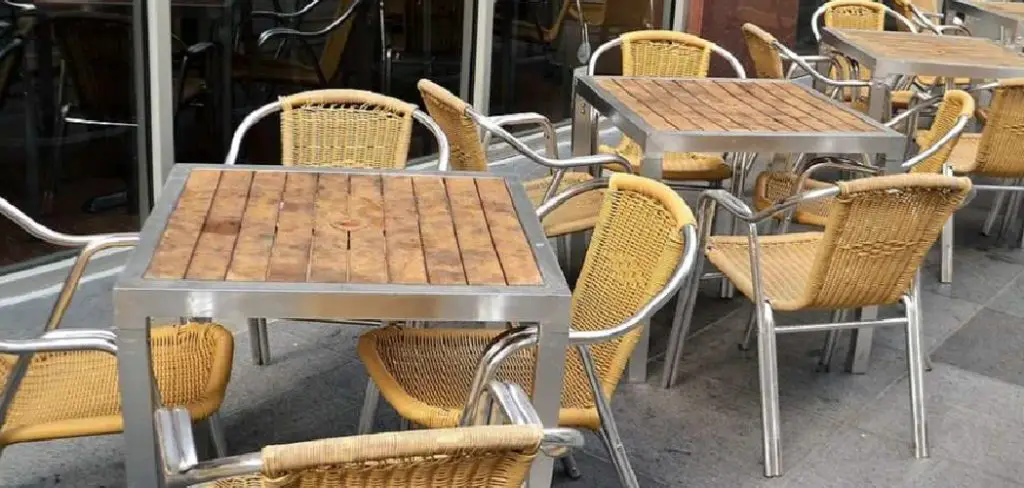
Importance of Maintaining Aluminum Tables
The regular maintenance of aluminum tables is crucial for several reasons. Firstly, preserving the table’s appearance ensures that it remains aesthetically pleasing and aligns with the decor of your space. Over time, untreated dirt and grime can cause the surface to appear dull and unattractive. Moreover, consistent cleaning helps to protect the table from potential corrosion, especially if it is positioned in a location exposed to moisture or salt air.
This proactive approach extends the lifespan of your table, allowing it to continue serving its functional purpose without requiring early replacement. Additionally, maintaining a clean surface minimizes the likelihood of stains becoming permanent, ensuring that accidental spills do not mar the aluminum’s natural sheen. Ultimately, keeping your aluminum table well-maintained contributes to a more inviting and hygienic environment, enhancing both its form and function.
Common Uses of Aluminum Tables
Aluminum tables are versatile pieces of furniture, suitable for a wide range of settings due to their lightweight nature and modern look. One of the most popular uses of aluminum tables is in outdoor patios and garden areas. Their resistance to rust and corrosion makes them ideal for withstanding various weather conditions, providing a reliable and stylish option for alfresco dining or lounging.
In indoor spaces, aluminum tables often serve as contemporary coffee or side tables, adding a sleek touch to living rooms or office environments. Additionally, their durability and easy maintenance make them a favored choice for commercial settings such as cafes, restaurants, and event venues, where tables must endure heavy usage while maintaining their aesthetic appeal. Whether for residential or commercial purposes, aluminum tables offer practicality combined with a timeless design.
Understanding Aluminum Tables
Aluminum tables stand out for their exceptional qualities that make them a preferred choice in many domains. At the core of their popularity is the material itself—aluminum is lightweight yet robust, providing sturdiness without the bulk associated with other metals. This balance makes transporting and rearranging aluminum tables quite convenient, whether in a home setting or a bustling commercial environment. Additionally, aluminum’s natural resistance to rust and corrosion, even when exposed to harsh weather conditions, enhances its suitability for outdoor use.
The metal’s reacting layer of aluminum oxide forms a protective coating that prevents further oxidation, ensuring long-term durability. Moreover, aluminum tables often come in a variety of designs and finishes, ranging from brushed and polished surfaces to powder-coated color options, allowing for flexible integration into different decor styles. Understanding these features helps in appreciating the practical and aesthetic benefits that aluminum tables bring to any setting.

10 Methods How to Clean Aluminum Table
1. Warm Soapy Water Method
The simplest and most widely recommended method for cleaning an aluminum table is using warm soapy water. Begin by filling a bucket with warm water and adding a few drops of mild dish soap. Mix the solution until sudsy. Use a soft cloth or sponge to wipe down the table, focusing on areas with dirt or grease buildup. Rinse the table thoroughly with clean water to remove any soap residue and dry it with a microfiber cloth to prevent water spots. This gentle method is ideal for regular maintenance and ensures your aluminum table stays clean and free from surface stains.
2. Vinegar and Water Solution
Vinegar is a natural cleaning agent that is highly effective for aluminum surfaces. Mix equal parts white vinegar and water in a spray bottle. Spray the solution generously onto the table and let it sit for a few minutes. Wipe the surface clean with a soft cloth, working in circular motions to lift dirt and grime. For tougher stains, apply undiluted vinegar directly to the affected areas before scrubbing. Rinse thoroughly with water and dry with a soft towel. This method not only cleans but also helps restore the table’s shine.
3. Baking Soda Paste
Baking soda is a mild abrasive that works wonders on stubborn stains or discoloration. To create a cleaning paste, mix baking soda with a small amount of water until it forms a thick consistency. Apply the paste to the aluminum table using a soft sponge or cloth, focusing on stained areas. Gently scrub in circular motions, then rinse thoroughly with water. Wipe the table dry to reveal a clean and polished surface. This method is particularly useful for removing oxidation and restoring luster to older tables.
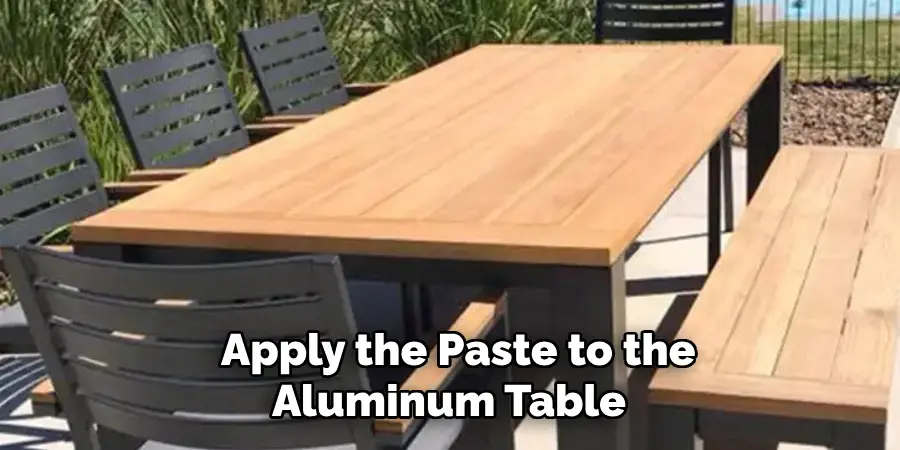
4. Commercial Aluminum Cleaner
For a professional-grade cleaning, consider using a commercial aluminum cleaner. These products are specifically formulated to clean and protect aluminum surfaces without causing damage. Follow the manufacturer’s instructions for application, which typically involves applying the cleaner, allowing it to sit for a few minutes, and wiping it off with a soft cloth. Rinse with water and dry thoroughly. This method is ideal for heavily soiled tables or those exposed to outdoor elements like dirt, rust, or salt.
5. Lemon Juice Treatment
Lemon juice is a natural cleaning agent that effectively removes stains and restores shine. Squeeze fresh lemon juice onto the table’s surface or use store-bought lemon juice. Spread it evenly using a sponge or cloth and allow it to sit for 5-10 minutes. Scrub gently with a soft brush or cloth, paying extra attention to tarnished areas. Rinse the table with water and dry it thoroughly. The acidity of the lemon juice breaks down grime and oxidation, leaving your table bright and clean.
6. Aluminum Foil and Water
This unconventional method works well for light rust or tarnish on aluminum tables. Crumple a piece of aluminum foil into a ball and dip it into water. Use the foil to gently scrub the table’s surface, focusing on areas with visible stains or corrosion. The chemical reaction between the aluminum foil and the table helps lift dirt and oxidation without scratching the surface. Wipe the table clean with a damp cloth and dry thoroughly. This method is especially useful for outdoor aluminum tables exposed to the elements.
7. Pressure Washing for Outdoor Tables
If your aluminum table is used outdoors and has accumulated heavy dirt or debris, a pressure washer can be a quick and effective cleaning tool. Set the pressure washer to a low or medium setting to avoid damaging the aluminum surface. Spray the table evenly, ensuring you clean all sides, including the legs and edges. Allow the table to air dry or wipe it down with a towel. This method is efficient for large tables or those heavily soiled by outdoor use.
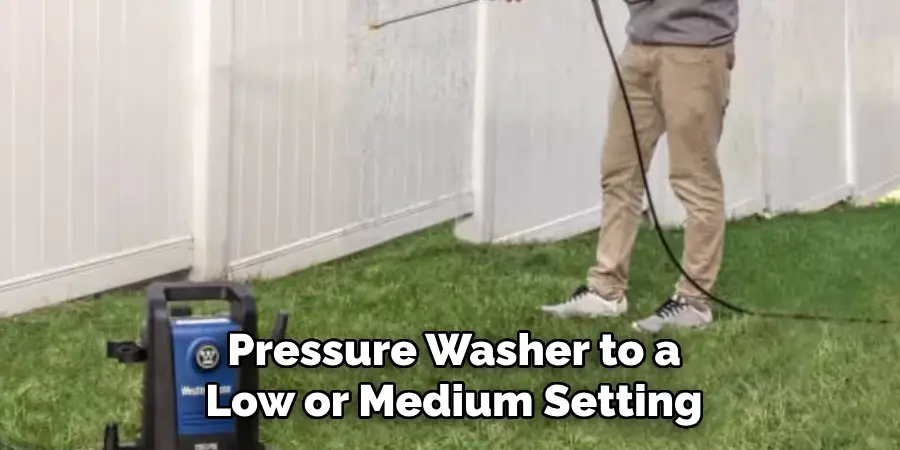
8. Cream of Tartar Polishing Paste
Cream of tartar is a pantry staple that doubles as a polishing agent for aluminum. Mix cream of tartar with water to create a paste and apply it to the table’s surface using a soft cloth. Rub in circular motions to remove tarnish and restore shine. Rinse with water and dry with a microfiber cloth. This method is particularly effective for tables that have lost their luster and need a gentle yet thorough polish.
9. WD-40 for Tough Stains
WD-40 is a versatile product that can help remove tough stains and grime from aluminum surfaces. Spray a small amount onto a soft cloth and wipe the table’s surface, focusing on stained or tarnished areas. Let the product sit for a few minutes before wiping it off with a clean cloth. Rinse the table with water and dry it thoroughly. This method is best used sparingly and on areas requiring extra attention, as it leaves a protective layer that can repel future dirt.
10. Oxidation Removal with Aluminum Polish
Over time, aluminum tables may develop a dull, oxidized appearance. Use a specialized aluminum polish to remove oxidation and restore the table’s original shine. Apply the polish to a clean cloth and rub it onto the surface in small, circular motions. Let the polish sit for a few minutes before buffing it off with a microfiber cloth. Repeat the process for areas with heavy oxidation. This method not only cleans but also protects the table from future tarnishing.
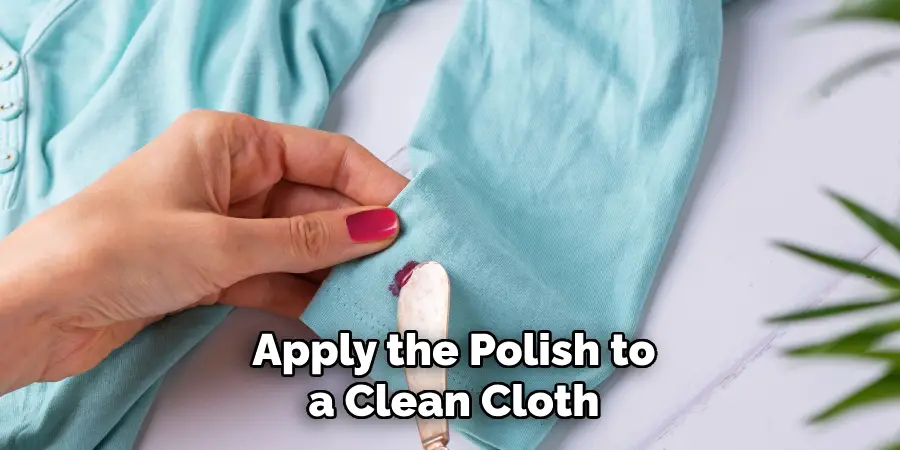
Conclusion
In conclusion, maintaining the cleanliness and appearance of your aluminum table requires regular care and the right cleaning methods. Whether using simple household items like vinegar, baking soda, or lemon juice, or opting for commercial aluminum cleaners and polishes, each method provides effective solutions for different levels of dirt, stains, and oxidation. By following these techniques, you can ensure that your table remains in excellent condition, preserving its shine and durability over time. Thanks for reading, and we hope this has given you some inspiration on how to clean aluminum table!

